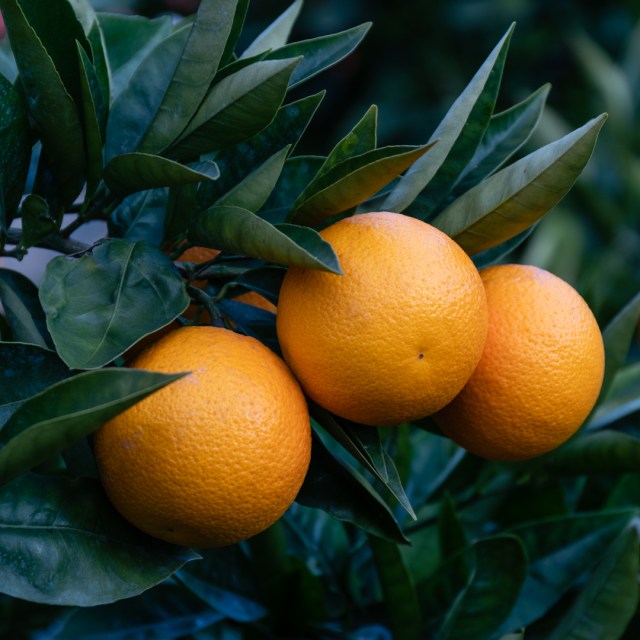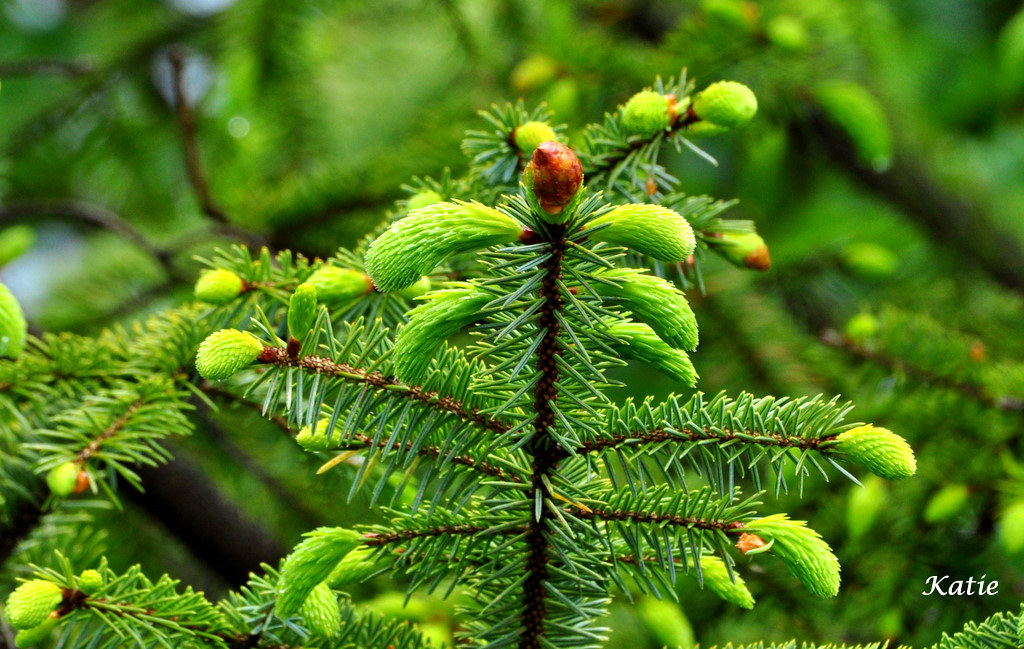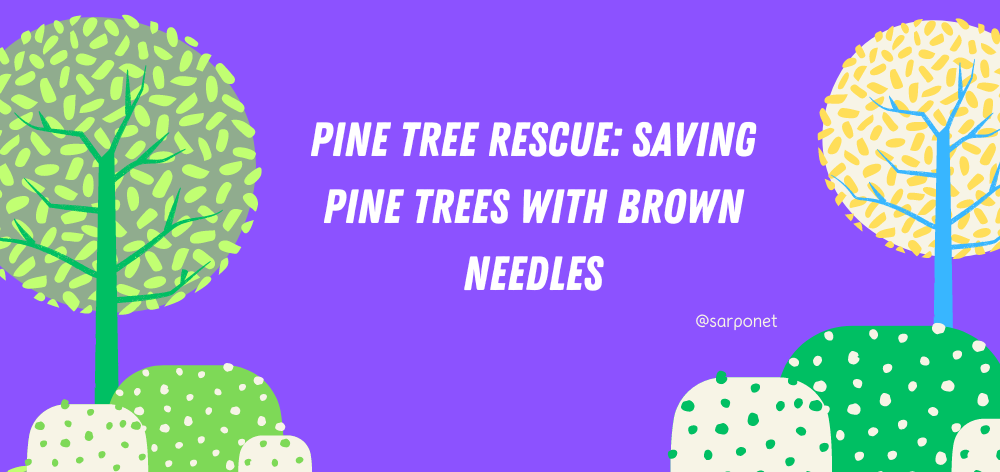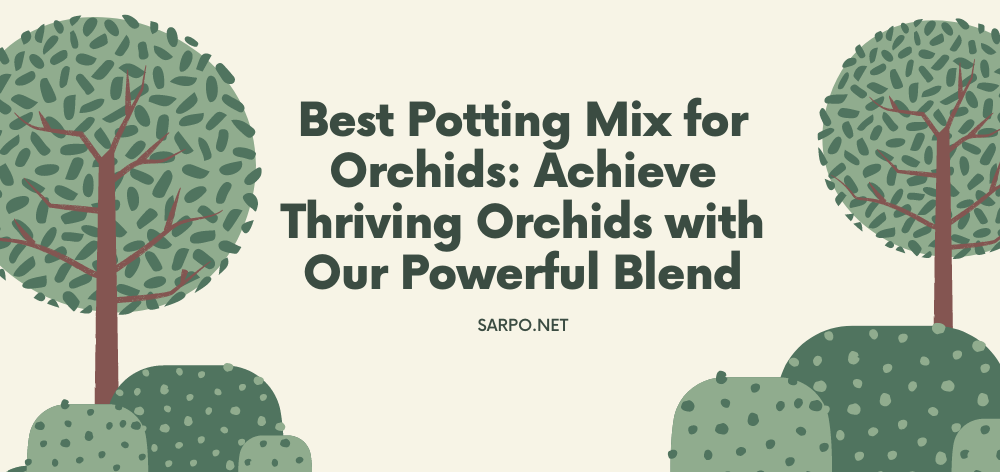
How to Apply Epsom Salt to Citrus Trees
To apply Epsom salt to citrus trees, mix it with water to create a solution and spray it on the foliage or apply it to the soil around the tree. This method can help provide magnesium to the tree and improve its overall health.
Applying Epsom salt to citrus trees should be done with caution and in proper proportions to avoid any adverse effects. Epsom salt, also known as magnesium sulfate, can benefit your citrus tree care routine. Citrus trees, like lemon trees, may exhibit yellowing leaves or other signs of nutrient deficiencies.
Using Epsom salt as a supplement can help provide magnesium to the tree, which is essential for healthy growth. Epsom salt can be applied by mixing it with water and spraying it on the foliage or by applying it around the base of the tree. However, it is important to follow proper guidelines and proportions to avoid over-application. We will explore the correct way to apply Epsom salt to citrus trees and the potential benefits it can provide.
Understanding The Benefits Of Epsom Salt For Citrus Trees
Applying Epsom salt to citrus trees can provide numerous benefits, including revitalizing the plants and promoting healthier growth. By using Epsom salt solutions as a foliar spray or incorporating it into the watering routine, citrus trees can receive the necessary magnesium for optimal productivity.
Introduction To The Use Of Epsom Salt On Citrus Trees
Citrus trees, such as lemon trees, are a popular choice for many gardeners due to their vibrant fruit and refreshing aroma. However, yellow leaves on citrus trees can be a cause for concern. Fortunately, the application of Epsom salt can help address this issue and provide several benefits to citrus trees. In this blog post, we will explore the benefits of Epsom salt for citrus trees, highlighting the importance of magnesium and explaining how Epsom salt can improve nutrient uptake, promoting healthy growth and fruit production.
Explaining The Benefits And Importance Of Magnesium For Citrus Trees
Magnesium is an essential nutrient for citrus trees as it plays a crucial role in various physiological processes. It assists in the production of chlorophyll, the pigment responsible for the green color of leaves, and aids in energy synthesis within the tree. Additionally, magnesium facilitates enzyme activity, promoting the efficient utilization of other essential nutrients like nitrogen and phosphorus. Without adequate magnesium, citrus trees can develop a deficiency, leading to stunted growth, yellowing leaves, and reduced fruit production.
Discussing How Epsom Salt Helps Improve Nutrient Uptake In Citrus Trees
Epsom salt, chemically known as magnesium sulfate, is a cost-effective and readily available solution to supplement magnesium levels in citrus trees. When applied to the soil or sprayed onto the foliage, Epsom salt dissolves quickly and releases magnesium ions. These ions are absorbed by the tree’s roots and transported to various parts of the plant, including leaves and fruit. As a result, Epsom salt helps improve nutrient uptake in citrus trees, allowing them to efficiently utilize magnesium and other essential nutrients for optimal growth and development.
One important aspect to note is that the application of Epsom salt should be done in moderation. Excessive use can lead to an imbalance of nutrients in the soil, potentially causing other nutrient deficiencies. It is advisable to perform a soil test before applying Epsom salt to determine the exact nutrient requirements of your citrus trees. Consulting with a horticulture expert or local agricultural extension office can provide valuable insights into the specific needs of your citrus trees and ensure proper application of Epsom salt.
In conclusion, understanding the benefits of Epsom salt for citrus trees is essential for maintaining healthy growth and fruitful harvests. By supplementing magnesium levels, Epsom salt enables citrus trees to overcome nutrient deficiencies, resulting in vibrant, green leaves and bountiful fruits. However, it is crucial to apply Epsom salt judiciously and in conjunction with proper soil testing to prevent any adverse effects and maintain a balanced nutrient profile for your citrus trees.
Identifying Magnesium Deficiency In Citrus Trees
Magnesium deficiency in citrus trees can be identified by several key symptoms. The first and most noticeable sign is the yellowing of the leaves, typically appearing towards the apex of the older leaves. This yellowing creates a distinct triangular pattern, with the base of the leaf remaining green.
How To Recognize Yellowing Leaves And Other Signs Of Deficiency
Recognizing yellowing leaves and other signs of magnesium deficiency in citrus tree leaves is crucial for maintaining their health. In addition to the yellowing of the leaves, you may also observe other symptoms such as leaf curling and premature leaf fall during late summer and autumn. These signs can serve as clear indicators of magnesium deficiency.
Understanding The Impact Of Magnesium Deficiency On Fruit Production
Magnesium deficiency significantly affects fruit production in citrus trees. When magnesium levels are low, the overall health and growth of the tree can be compromised, leading to smaller and less abundant fruit. Additionally, inadequate magnesium levels can also result in poor fruit quality, affecting the sweetness and flavor of citrus fruits.
Preparing And Applying Epsom Salt Solution
Applying Epsom salt solution to citrus trees can help revitalize them and promote healthy growth. It is recommended to use caution when applying the mixture to avoid any potential damage to the foliage. Regular use of Epsom salt can yield larger, sweeter fruits and prevent magnesium deficiency in citrus trees.
Step-by-step Guide On Preparing Epsom Salt Solution For Citrus Trees
To effectively apply Epsom salt to your citrus trees, it is crucial to prepare the solution correctly. Follow these steps to create the perfect Epsom salt solution for your trees:
Step 1: Gather the necessary materials
- Epsom salt
- A clean bucket or container
- A measuring cup or spoon
- Water
Step 2: Measure the appropriate amount of Epsom salt
Using a measuring cup or spoon, carefully measure the appropriate amount of Epsom salt for your citrus trees. The recommended concentration is 2 tablespoons of Epsom salt per gallon of water. However, for young or newly planted trees, reduce the amount to 1 tablespoon per gallon.
Step 3: Dissolve the Epsom salt
Fill the clean bucket or container with warm water, leaving enough room to dissolve the Epsom salt. Slowly add the measured Epsom salt to the water while stirring continuously. Continue stirring until the salt is fully dissolved.
Step 4: Allow the solution to cool
After the Epsom salt is completely dissolved, let the solution cool down to room temperature. This ensures that it is safe for application and won’t cause any thermal stress to the citrus trees.
Step 5: Transfer the solution to a sprayer or watering can
Once the solution has cooled, transfer it to a sprayer or watering can. Ensure that the instrument is clean and free from any chemical residue that could potentially harm the trees.
Proper Concentration For Different Stages Of Tree Growth
Newly planted or young citrus trees
For newly planted or young citrus trees, it is recommended to use a diluted concentration of the Epsom salt solution. Mix 1 tablespoon of Epsom salt per gallon of water. This gentle concentration allows the young trees to gradually absorb the nutrients without overwhelming their delicate root systems.
Established or mature citrus trees
For established or mature citrus trees, the concentration can be increased to 2 tablespoons of Epsom salt per gallon of water. These trees have a stronger root system and can benefit from the added magnesium and sulfur to support their overall growth and fruit production.
Frequency And Timing Of Application For Best Results
Spring and summer application
To achieve the best results, apply the Epsom salt solution to your citrus trees during the spring and summer months. This is when the trees are actively growing and require nutrients to support their development. Aim to apply the solution every 4-6 weeks during this period.
Avoid application in winter and fall
During the winter and fall months, citrus trees go into a dormant phase where their nutrient requirements decrease. It is unnecessary to apply Epsom salt during this time, as the trees are not actively growing. Reserve the application for the spring and summer seasons to maximize its effectiveness.
Application method
When applying the Epsom salt solution, ensure that it is evenly distributed around the base of the tree. It is best to avoid spraying the foliage, as this could potentially cause leaf burn. Instead, focus on the soil surrounding the tree, allowing the roots to absorb the nutrients directly.
By following these steps and guidelines, you can effectively prepare and apply Epsom salt solution to your citrus trees. Remember to adjust the concentration based on the tree’s growth stage and apply during the appropriate times for optimal results.
Applying Epsom Salt Solution To Citrus Trees
To apply Epsom salt to citrus trees, create a solution by mixing Epsom salt and water. Spray the foliage of the trees with the solution, taking care not to overapply. This method is often used to fertilize citrus trees, but caution should be exercised during application.
Techniques For Applying Epsom Salt Solution To Citrus Trees
When it comes to applying Epsom salt solution to citrus trees, there are a few techniques you can use. The two most common methods are spraying the foliage and soil application. Each method has its own benefits and considerations, so let’s examine them further.
Spraying Foliage Vs. Soil Application
The decision between spraying the foliage or applying Epsom salt solution to the soil depends on your specific needs and goals. Here is an overview of each method:
| Spraying foliage | Soil application |
|---|---|
| ✅ Directly targets the leaves | ✅ Provides root absorption |
| ✅ Quick absorption for faster results | ✅ Slow-release effect for long-term benefits |
| ⚠️ Risk of leaf burn if not diluted properly | ⚠️ Risk of over-application if not measured correctly |
Dos And Don’ts Of Applying Epsom Salt Solution To Avoid Damage
- DO dilute the Epsom salt solution according to the recommended guidelines to prevent leaf burn.
- DO test the solution on a small area of the tree before applying it to the entire plant.
- DO follow the instructions provided by the manufacturer for proper application and dosage.
- DON’T apply Epsom salt solution excessively, as it can lead to nutrient imbalances and damage the tree.
- DON’T apply Epsom salt solution during periods of heavy rainfall, as it may wash away before the tree can absorb it.
- DON’T apply Epsom salt solution if your tree is already showing signs of nutrient deficiencies without consulting a professional.
By following these techniques and adhering to the dos and don’ts of applying Epsom salt solution, you can ensure the health and vitality of your citrus trees. Remember, moderation and caution are key in achieving optimal results.
Monitoring And Assessing The Effects Of Epsom Salt Application
Applying Epsom salt to citrus trees can help revitalize them and improve fruit yield. It’s important to monitor the effects and assess the progress carefully to ensure proper application and avoid any potential damage.
how To Evaluate The Impact Of Epsom Salt On Citrus Trees/h3
After applying Epsom salt to your citrus trees, it’s important to monitor and evaluate the impact of the application. This will help you determine the effectiveness of the treatment and make any necessary adjustments for optimal tree health and growth. Here’s how you can evaluate the impact of Epsom salt on your citrus trees:
- Observe the foliage: Take note of any changes in the color and appearance of the leaves. Pay attention to whether the yellowing or discoloration of the leaves improves or worsens after the Epsom salt application.
- Inspect new growth: Monitor the development of new leaves and branches. Look for signs of improved growth, such as increased leaf size, healthy green color, and overall vigor.
- Check fruit production: Assess the productivity of your citrus trees. Look for an increase in the number of fruits produced, as well as their size and quality. Epsom salt is known to promote fruit development, so keep an eye out for positive changes.
- Consider overall tree health: Evaluate the overall health and vitality of your citrus trees. Look for improvements in pest and disease resistance, as well as the overall strength and resilience of the trees.
Monitoring the Health And Growth Of The Trees After Application/h3
Monitoring the health and growth of your citrus trees after applying Epsom salt is crucial to ensure they continue to thrive. Here are some steps you can take to monitor the health and growth of your trees:
- Regular visual inspections: Take the time to visually inspect your trees on a regular basis. Look for any changes in foliage, new growth, or signs of pests or diseases. This will allow you to catch any issues early and take appropriate actions.
- Measure growth: Keep track of the growth of your citrus trees using specific measurements such as height or circumference. Regularly measure and compare these metrics to assess growth progress over time.
- Record observations: Create a journal or record of your observations. Note any changes or improvements you see in the health and growth of your trees. This will help you track progress and make informed decisions about further adjustments to the application.
adjusting And Fine-tuning The Application Based On Tree Response/h3
Based on the response of your citrus trees to the Epsom salt application, it may be necessary to adjust and fine-tune the application to ensure optimal results. Here are some guidelines to follow:
- Start with the right dosage: Initially, follow the recommended dosage of Epsom salt for citrus trees. However, if you notice minimal or no improvements, you may consider increasing or decreasing the dosage slightly.
- Experiment with application frequency: Epsom salt can be applied at varying frequencies, depending on your trees’ needs. If the response is positive, you can continue with the current frequency. If not, try adjusting the frequency to see if it yields better results.
- Consider alternative methods: If your trees don’t respond well to foliar sprays, you can try other application methods such as root drenching or incorporating Epsom salt into the soil around the tree’s base. Monitor the response to these alternative methods and make adjustments if necessary.

Credit: www.vedaoils.com
Frequently Asked Questions On How To Apply Epsom Salt To Citrus Trees
Can You Put Epsom Salt Around Fruit Trees?
Yes, Epsom salt can be used around fruit trees to promote growth. It provides a boost of magnesium, resulting in larger and sweeter fruits. It can also be applied directly to plants by adding one tablespoon per gallon of water or used as a foliar spray.
Can You Put Epsom Salt Directly On Plants?
Yes, you can directly apply Epsom salt to plants. It can be added to the watering can, using one tablespoon per gallon of water, to be used once or twice a month. It can also be used as a foliar spray.
Epsom salt helps plants grow and yields larger, sweeter fruits.
What Are The Symptoms Of Magnesium Deficiency In Citrus Trees?
The symptoms of magnesium deficiency in citrus trees include yellowing of older leaves towards the top, with a green triangle at the base. Leaves may fall prematurely in late summer and autumn.
Why Are The Leaves On My Citrus Tree Turning Yellow And Curling?
The yellowing and curling of citrus tree leaves could be due to a magnesium deficiency. Use Epsom salt and water solutions to fertilize citrus trees, but be cautious when applying them. Spray the foliage with the mixture to help revitalize the plant.
Conclusion
Applying Epsom salt to citrus trees can be a game-changer for their health and productivity. By providing necessary magnesium, Epsom salt helps combat yellowing leaves and magnesium deficiency symptoms in citrus trees. However, caution should be exercised when using Epsom salt solutions to prevent over-fertilization.
A tablespoon of Epsom salt per gallon of water, applied monthly, can effectively boost the growth and yield of fruit trees. So, give your citrus trees a much-needed boost with the natural benefits of Epsom salt and watch them thrive!
Related Articles
10 Best Small Evergreen Trees with Non Invasive Roots
 Dr Ahsanur Rahman, PHD
Dr Ahsanur Rahman, PHDPine Tree Rescue: Saving Pine Trees with Brown Needles
 Dr Ahsanur Rahman, PHD
Dr Ahsanur Rahman, PHD





